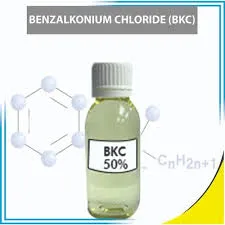polyacrylamide in water
Polyacrylamide is a polymer widely used in various applications, primarily in the fields of biochemistry, environmental science, and materials engineering. When polyacrylamide is dissolved in water, it forms a viscous solution that has versatile properties, making it suitable for diverse applications.
One of the significant advantages of polyacrylamide is its ability to enhance the viscosity of aqueous solutions. This property is particularly beneficial in processes such as drilling operations, where highly viscous fluids help to transport cuttings efficiently and stabilize boreholes. In the field of wastewater treatment, polyacrylamide acts as a flocculating agent, assisting in the aggregation of suspended particles, which promotes sedimentation and clarification in water treatment processes.
The molecular structure of polyacrylamide consists of repeating units of acrylamide, which can be cross-linked to form a hydrogel. This hydrogel exhibits unique characteristics, including increased surface area and water retention capabilities. Consequently, polyacrylamide gels have found applications in agriculture as soil conditioners, improving moisture retention and nutrient availability for crops.
In the laboratory, polyacrylamide is commonly used in electrophoresis, a technique used to separate biomolecules such as proteins and nucleic acids. Polyacrylamide gel electrophoresis (PAGE) allows researchers to analyze the size and purity of these biomolecules, making it an essential tool in molecular biology and biochemistry.
polyacrylamide in water

Moreover, the adaptability of polyacrylamide solutions can be tailored to meet the specific needs of various applications
. By adjusting the concentration of polyacrylamide in water, researchers can create solutions with different viscosities and properties. This customization enables the development of specialized formulations for specific industrial or laboratory uses, enhancing the effectiveness of processes across a broad range of industries.Despite its advantages, it is important to approach the use of polyacrylamide with caution, particularly concerning its environmental impact. The breakdown products of polyacrylamide can release acrylamide, a compound known for its neurotoxic effects. Therefore, understanding the safety and environmental considerations is crucial when utilizing polyacrylamide in any capacity.
In conclusion, polyacrylamide in water serves as a fundamental component across various scientific and industrial applications. Its ability to enhance viscosity, facilitate sedimentation, and enable molecular separation underscores its importance. Careful consideration of its properties and potential risks is necessary to maximize its benefits while minimizing any adverse effects on health and the environment.
-
Water Treatment with Flocculant Water TreatmentNewsJun.12,2025
-
Polymaleic AnhydrideNewsJun.12,2025
-
Polyaspartic AcidNewsJun.12,2025
-
Enhance Industrial Processes with IsothiazolinonesNewsJun.12,2025
-
Enhance Industrial Processes with PBTCA SolutionsNewsJun.12,2025
-
Dodecyldimethylbenzylammonium Chloride SolutionsNewsJun.12,2025





